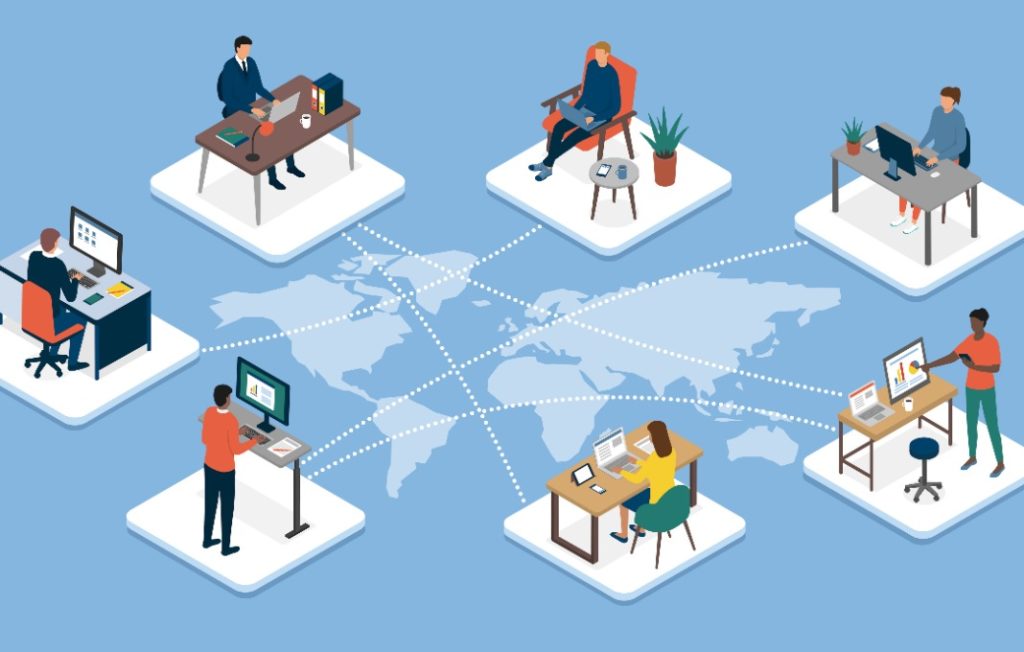
Just a few years ago, only the largest companies did much outsourcing of marketing overseas. Today, even small companies are getting on board—and not just for low-skill tasks. A wide range of duties can now be handled effectively by overseas contractors, whether with a robust team or a single virtual assistant.
Outsourcing is a powerful way to achieve greater marketing performance at the same or a lower cost. In the coming years, it will first become a competitive advantage, and then a necessity as more companies follow the trend. Proactive companies that implement an overseas team will reduce their costs while increasing productivity, adaptability and speed, while companies that don’t will struggle to retain market share and remain profitable. And since the pandemic, we all know that a remote workforce works for many types of roles in all types of companies.
If you’re hesitant, I completely understand.
I am a longtime digital marketer and I had resisted outsourcing overseas myself for a long time, preferring to hire only local employees who could work from my office. At the time, I believed that was the only way to get reliable people who could do the job without a lot of babysitting. But when a fellow agency owner shared that the vast majority of his team was not only not local, but was in fact, mostly not even U.S.-based, my opinion started to change.
Since I could see that it was viable, I started building a U.S.-based remote workforce for my agency, Spartan Media. I loved the fact that it gave me access to a dramatically larger pool of candidates, often at a lower cost than if I had hired locally. But this was just the beginning—I soon started working to build a team of overseas contractors. Only it didn’t go well.
Not because outsourcing overseas didn’t work, but because I approached it all wrong. Shortly after that, I met another friend who had built his entire business around this concept, which completely transformed my approach to outsourcing.
Robert Nickell co-founded the now 900+ person virtual assistant agency, Rocket Station, after a lot of trial and error in trying to hire virtual assistants in the Philippines for his previous real estate business. Once he cracked the code, he realized that others must face the same challenges if it had been this difficult for him, which led to the birth of Rocket Station.
From a financial perspective, this is an obvious choice because it reduces your fixed costs. You’ll pay a lower hourly rate and no payroll taxes. And from a workflow perspective, it gives you a larger, more diverse team that can accomplish more in less time.
So in this article, I’m going to share my own experience along with wisdom from Robert Nickell on how to restructure your marketing department to save money while improving their performance.
Deciding what to outsource
You can’t simply outsource your entire marketing department overseas, so let’s get rid of that idea right from the start.
“That wouldn’t be practical or effective,” says Nickell. “Certain roles are well suited for outsourcing, but some are not—the key is understanding the difference between the two. We all know that most mundane, repetitive tasks can be outsourced overseas, but most entrepreneurs don’t realize that a lot of creative tasks can be outsourced as well. The tasks directly related to the core essence of your company, however, should generally remain in-house.”
So the first step is deciding exactly which marketing roles will be outsourced and which should remain in-house or with U.S.-based professionals. This is critical because delegating certain tasks to the wrong people can lead to wasted resources and even disastrous outcomes.
Anything that requires intimate knowledge of your core business, a deep understanding of your customer persona and American culture, or a strong connection to your brand should be handled in-house or by U.S.-based professionals.
This could include roles like:
- Marketing strategy
- Development of strategic partnerships
- Messaging and copywriting
- Brand ambassadors/video spokespeople
- The human side of business development
Roles that don’t have these requirements can typically be outsourced overseas as long as you have a clearly documented process.
This could include roles like:
- Posting content on social media
- Web development
- Analytical tracking and reporting
- Graphic design
- List compilation/data entry
In most cases, a majority of the work your marketing team does can probably be outsourced to an overseas team of virtual assistants, freeing up your in-house team to focus on doing more of the higher-level work that only they can do.
Creating a documented process
It’s critical that your team follow a thoroughly documented process.
We often take our own knowledge for granted, and that means when we try to outsource a task, we will typically leave a lot of information out of our instructions. This leads to inconsistent results because everyone tries to do things their way. Nickell explains that’s exactly why his own early attempts to outsource overseas failed.
“I just dropped a task in their lap and hoped they would do things the way I wanted them to,” he remembers. “I quickly learned that I could incrementally improve their performance by improving the process. I would walk through exactly what I wanted to be done, documenting every single step. And anytime one of my virtual assistants asked a question or ran into a problem, I would refine our process to address it. Over time, all of our processes became so dialed in that our productivity and quality skyrocketed.”
Having your team follow a process leads to consistent results, greater efficiency and a baseline from which to improve. This is especially important when it comes to overseas contractors because they don’t have your knowledge and experience. And because of cultural differences and their strong desire to please you, many contractors won’t even alert you to problems unless you specifically ask them—sometimes, not even then.
Ideally, your process should be stored in the cloud so that everyone is working from the most current version, and it should clearly document:
- Every single step that’s required to properly complete a task.
- Any tools and resources needed to complete the task.
- Who to contact with questions, notifications or problems.
I use Diagrams.net for this, which is a robust flowchart tool that integrates with the major cloud storage platforms. We generally create a separate document for each main task, and then for long or complex tasks, we will break sub-tasks into separate tabs within the same document. You can even link to other process documents.
The idea here is to create a seamless flow of instruction for everything you plan to outsource so that your outsourced team can effectively and efficiently complete the tasks exactly the way you want them completed.
Measuring performance
What gets measured gets improved. But most people measure the wrong things, and as a result, they encourage activity that achieves the KPIs, but fails to drive revenue.
Nickell says, “Obviously, we want to increase revenue—not just keep our team busy—so we need to make sure we’re measuring performance by KPIs that will drive increased revenue.
“Too often, I’ll see entrepreneurs use KPIs based on things like word count, followers, the number of emails sent or phone calls made…things that drive a lot of activity, but don’t necessarily impact your company’s bottom line,” adds Nickell. “Don’t get me wrong, there are some cases where these kinds of metrics are useful, but we need to track KPIs that drive the activity needed to achieve our goals. When they understand exactly what you want to achieve, they can align their activity to that objective.”
This is a critical component because it not only helps you to encourage the right kind of activity, but it also helps you to make expectations crystal clear. Your KPIs tell your virtual assistant, “This is what I want the outcome of your work to be,” which gives them the ability to adapt to whatever the workday throws at them.
The challenging part is determining how best to measure work completed by your virtual assistants so you can then improve their performance without encouraging them to waste their time in ways that meet the KPIs but fail to increase revenue.
The solution is to first identify exactly what you need to do to achieve your revenue goals. Then reverse engineer a set of KPIs throughout your process to encourage the work that will produce that outcome.
For example, in my agency, one of the KPIs I track is the number of pitches each team member sends. This data is useless by itself, but when coupled with the number of pitches that result in positive publicity for a client, it tells me how effective each team member’s pitches are. These two KPIs, when tracked together, ensure that my team is focused on pitching the right stories about the right clients to the right journalists, rather than just trying to send the most pitches possible.
Nickell says, “It’s also important to review your KPIs from time to time to make sure they’re still driving the activity you want. If performance starts to lag, it may be time to reevaluate how you’re measuring performance along the way leading up to the end goal.”
Virtual assistants will become the backbone of your marketing department
Some may argue that this approach ships U.S.-based jobs overseas. Those people are correct, but at the same time, we have to deal with the economic reality of the world we’re living in today. Leveraging virtual assistants gives you a more robust team with a broader set of skills—all at a lower cost.
Rather than looking at this as losing some local jobs, we should look at it as a way to allow our most valuable employees to focus on the activities that bring our business the most value. If we want to remain competitive, we have to reduce costs while becoming more adaptable, efficient and productive. There’s simply no way around that.
This is the future of the modern marketing department.








